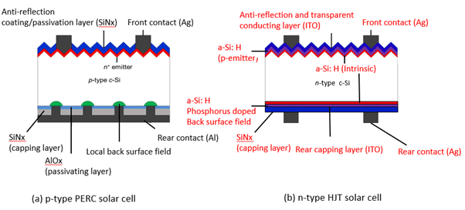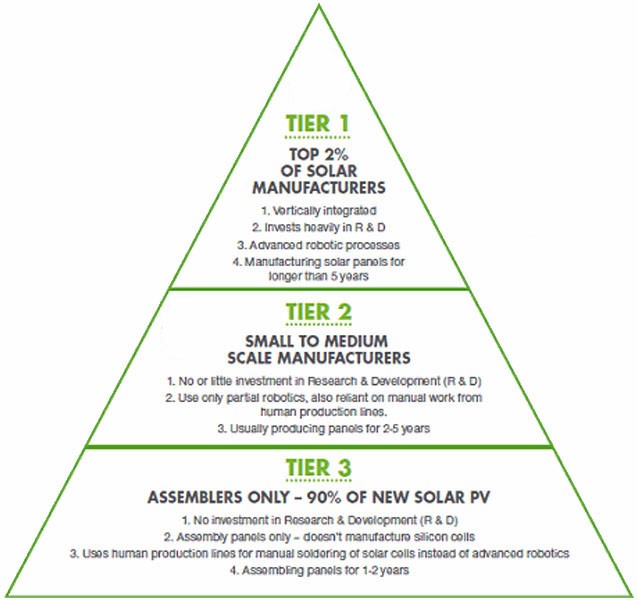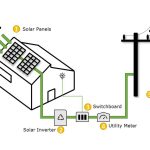New Hetero Junction Technology (HJT) Solar Panels
Hetero Junction Technology HJT is developed by a Japanese company named Sanyo in the1980s. After that in the 2010s, HJT is acquired by Panasonic.
HJT cell has a special P-N junction circuit, which is a combination of two diverse technologies i.e. crystalline silicon cell which is sandwiched between the two layers of thin-film amorphous silicon. Both of these technologies, when used together can harvest more energy as compared to any other technology.
HJT is very different from the popular Passivated Emitter and Rear Cell (PERC). PERC cells are the modified form of conventional cells that can produce 6-12% more energy (approx.) than conventional PV panels. HJT is basically a successor to this PERC technology. The process of manufacturing solar panels is very different in both of these technologies.

Benefits of using HJT
- High Efficiency
The usage of top-quality hydrogenated intrinsic amorphous Silicon in HJT is the reason for the high efficiency in solar cells. This high-quality Silicon provides impressive defect passivation to the both front and rear surface in Silicon wafers.The efficiency of a solar panel is basically a conversion of captured sunlight into electrical power. HJT outperforms in terms of efficiency if compared with other conventional solar cell technologies. This technology has proven that it can attain solar cell efficiency greater than 23% whereas this efficiency rate is less than 22% in previous technologies like PERC, PERT (Passivated Emitter Rear Totally Diffused), and TOPCON (Tunnel Oxide Passivated Contact).HJT solar cells consist of thin material which is able to absorb sunlight. However, this material is not opaque completely. Some part of the sunlight can directly pass through this material, while some part of sunlight reflects off the surface. These solar cells have this advantage as they have three diverse layers of PV material. The main operation of converting Solar energy into Electrical energy is done by mid-layer i.e. N-type mono silicon. - Power
The maximum electrical power that can be generated by HJT systems is between 370 W to 400 W (approx.) per panel. This value of output power can be increased with new and advanced implementations during the development process. Previous technologies of thin-film models do not have this much generated power. HJT modules have remarked improvement of over 140 W if compared with previous technologies.The value of temperature coefficient in HJT solar panel is very less i.e. -0.26%/°C, which is far better than crystalline silicon. This makes HJT panels work excellently in the hot climate. The improved performance of solar cells permits remarkable electric power generation in all seasons, especially in hotter climates, in the entire world. - Energy Production
HJT solar cells have a different process of manufacturing if compared with conventional solar cells. Due to this it has good bifaciality and has a dark color. Bifaciality is basically termed as the ratio between rear side efficiency and front side efficiency of panels.This bifacial solution for new solar panels permits them to catch sunlight from the back of the panel as well and thus generating a high amount of electrical energy, which is approximately 15% to 20% greater than conventional panels. - Life Expectancy
Traditional solar panels available in the market have a warranty of 20 to 25 years maximum but HJT modules have a life expectancy of more than 30 years. A huge investment is done when you are installing a solar panel system at your homes, so a panel with better life expectancy i.e. HJT would be a very good choice for you. - Adaptability and Resilience
The advanced HJT solar panel system is designed for excellent performance in every situation. Even in the case of extreme weather, HJP panel makes sure of high production of electric power.
Conclusion
Moreover, as HJT is a new technology, so still a lot of research needs to be done on the manufacturing stability of HJT. This is because of processing challenges like amorphous silicon’s susceptibility to high-temperature processes.





